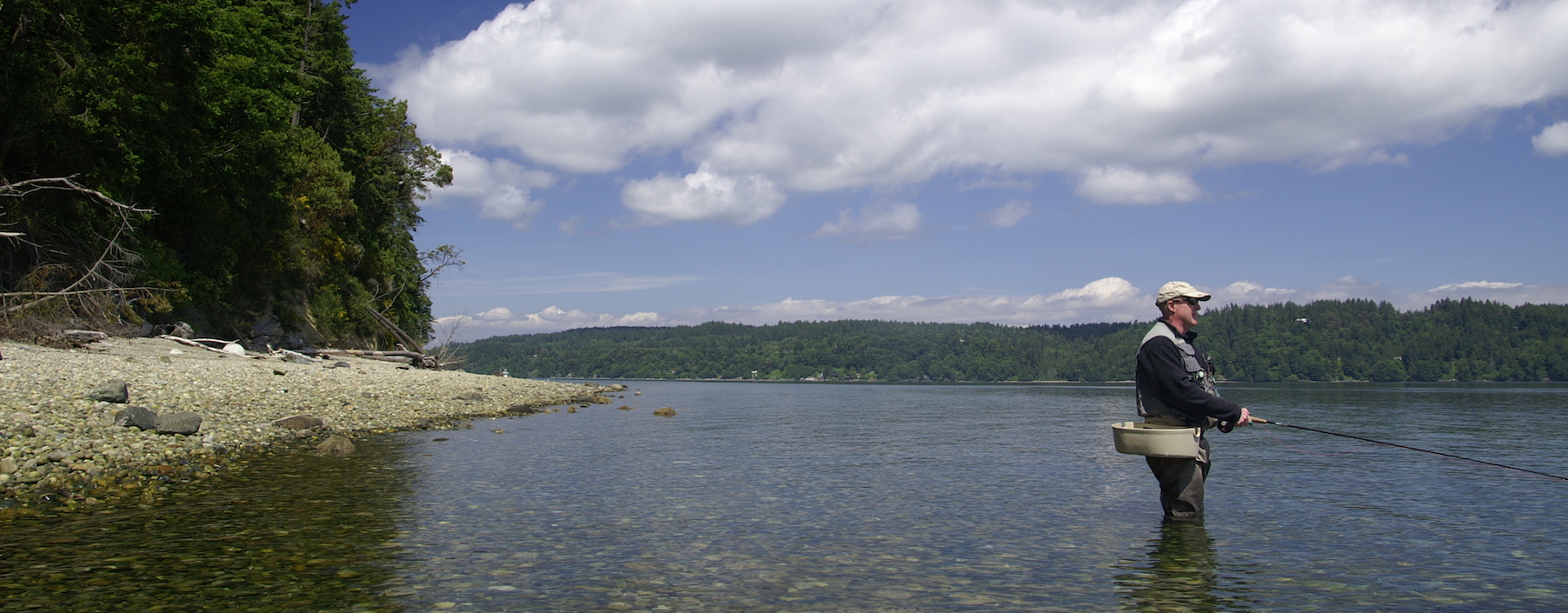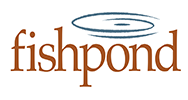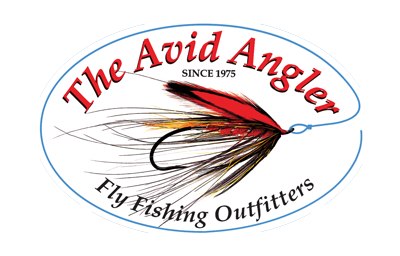Puget Sound, WA
Weather and Tide Links
General Overview
Success on the beach is directly related to your understanding of tides. We like this site:http://www.tides.net/washington/. The graphical representation of the tides coupled with the at-a-glance indication of daylight hours really helps plan your day. These following links to locations in the Puget Sound are spaced appropriately to give you a general overview of area tides. For specific locations, check the map page. Fishing Report Seattle Tides
| North Sound Tides | South Sound Tides | Weather |
Fly Fishing the Puget Sound
Fly fishing the Puget Sound is one of the best-kept secrets in local fishing. The sheer number of beaches accessible to the wading angler, the species available, and the experience of solitude in a crowded metropolitan area all make the Puget Sound a great place to fish. Depending on season and tide, any local beach can hold fishable numbers of sea-run cutthroat, resident salmon and migratory salmon. Some of the best beaches in the area are within an hour’s drive, and you don’t have to fish a whole day to get the best of them. Get to know your local beach, you won’t be disappointed.
When is the Puget Sound open to fishing?
Fishing regulations are subject to emergency closures and they change from year to year, so before you go, know what you are fishing for and always check the regs:http://wdfw.wa.gov/fishing/regulations/. Feel free to give us a ring with questions. It’s better to be safe than sorry!
Generally speaking, you can target sea-run cutthroat off the beach year round. Any cutthroat caught must be released.
Targeting salmon is subject to complicated area regulations, openings and closures by geographical area. Mostly we fish in Marine Areas 8-1, 8-2, 9 and 10, so if you are wondering whether you can target pink salmon or coho salmon in an area near Seattle, check out the regs on the link above or give us a ring and we’ll probably know what’s up.
Sections of the Puget Sound
For fishing purposes the Puget Sound and surrounding areas can be divided as follows:
South Puget Sound
This area of the Sound from about downtown Seattle to Olympia is characterized by several narrow channels and fingers of water that reach up into bays. Subject to the whim of tides and fed by small local creeks, they represent estuaries within an estuary. The Tacoma Narrows and Colvos Passage are 2 of the best channels to fish. Henderson Bay, Hammersly Inlet and Case Inlet are but a few of the reaches that provide good tidal movement and good fishing. Sea-run cutthroat and both resident and adult silver salmon are the primary targets down in this section of the Sound.
Seattle Area Beaches
The shoreline to the north and south of Seattle provides some excellent beach access for those pursuing cutthroat and salmon on the fly. Lincoln Park, Golden Gardens, Carkeek Park, Meadowdale Beach and Picnic Point are all within 30 min. of downtown Seattle and one is likely to find any of the species in Puget Sound off of these beaches. These spots, which are all city or county parks, are perfect for fishing a few hours at a time and every year both trout and salmon are taken at these locations. These spots give an angler a chance to fish before or after work without a long drive.
Kitsap Peninsula/Whidbey Island
The Kitsap Peninsula which lies just north and west of Seattle, and Whidbey Island which is further north and west, also are excellent places to fish salmon as they migrate into the Sound from the Strait of Juan de Fuca. The natural travel lanes for salmon cause them to intersect with the Kitsap/Whidbey beaches and the abundance of bait on the shoreline make these stretches a natural stopping point for a migrating salmon. Sea-run cutthroat are available here and bull trout/dolly varden char are also abundant on the east side of Whidbey Island in the spring.
Puget Sound Species And Seasons
The fishing calendar in Puget Sound finds an angler pursuing sea-run cutthroat and resident silvers throughout the year. Springtime is the most variable as many fish are still up spawning so numbers are lower than at other times. As spring swings into summer, the expectation of the first adult silver salmon and pink salmon (in odd years) increases. Late July, August and September is salmon time and most anglers are consumed by thoughts of 4 - 8 lb. fish chasing sand lance and herring imitations with abandon. Fall brings excellent cutthroat fishing and some late silver salmon action as well as chum salmon in November. After the final chum salmon have returned to the river, sea-runs and resident silvers take up an angler's time. Sea-run cutthroat fishing in the winter has to be experienced to be appreciated. The short dark days of winter which are often cold and wet are met with the warmth of aggressive pulls from South Sound cutthroat which willing chase and slash at a variety of baitfish and attractor patterns. At the same time, resident silvers of 1 - 3 lbs. sip tiny zooplankton and chase bait and fishing can be down right fantastic in the right locations.
When are the Best Times to Fly Fish the Puget Sound?
- September and October for Sea-Run Cutthroat - Hands down the best fishing off the beaches for cutthroat occurs during the fall in the Puget Sound. Strong sea-runs have been feeding all year and are colored up in full fall regalia.
- July and August for Migratory Coho - Hooking a 4 - 8+ lb. silver off the beach is one of the best experiences in all of fly fishing, and the fact that it happens in our backyard makes it that much sweeter
- August and September for Pink Salmon during odd-numbered years - Typically migrating to the Sound in large numbers, pinks off the beach can be good, clean fun for 3 - 5 lb. gamefish
- Winter and Early Spring for Resident Silver Salmon and Sea-run Cutthroat - Targeting local fish with euphausids and copepods (krill patterns) during the winter months can be challenging but rewarding
Tips on Fishing the Puget Sound
Puget Sound, including Hood Canal and Possession Sound, is one of the largest estuaries in the United States. Starting at the north near Everett through Seattle and south to Olympia, the Sound accounts for approximately 2,000 mi. of coastline out of 3,000 total mi. in Washington State. How does one fish such a large body of water?
- Good casting is essential for success off the beach. You must be able to cover water efficiently to find fish by casting methodically over open water. Windy conditions are the norm, not the exception. Being able to cast 30 - 40 ft. will get you started, and being able to cast longer distances in any condition will enhance your success. We offer private casting instruction and to help you acquire the casting skill necessary for Puget Sound success.
- Equally important to good casting is using the tide charts and getting to know specific locations. We are often asked which tide is best: incoming or outgoing? The answer is that our beaches fish well with moving water, and the only way to know for sure if there are fish during a specific tide is to go and cast for them. Bookmark the tides above as a starting point, and keep track of the tide each time you go.
- If you are fishing the beach consistently, consider using a stripping basket to manage your running line. Stripping baskets are essential tools for the beach caster, reducing the stick of your running line when shooting distance and keeping your casts free of seaweed and other debris. We typically have a number of high-quality stripping baskets in the shop, d on’t hesitate to give us a ring to check stock!
- Fishing an intermediate-sinking line is preferred when fishing subsurface patterns. An intermediate sinking line cuts through surface chop to give you a direct connection to the fish and increases the number of successful hookups.
- Ready to try something new? Our local fish love to eat poppers and surface patterns. There’s nothing like seeing a follow and boil on a fly fished in early morning glass. Give it a try!
Guiding and Expert Instruction
We are experts in fishing our local beaches, and hiring a guide can take years off the learning curve. The best way to experience the Puget Sound is during a full-day walk-and-wade trip. We also offer classes on fly fishing the Puget Sound, and private casting instruction.
Recommended Equipment
|
|
Recommended Flies
|
|











